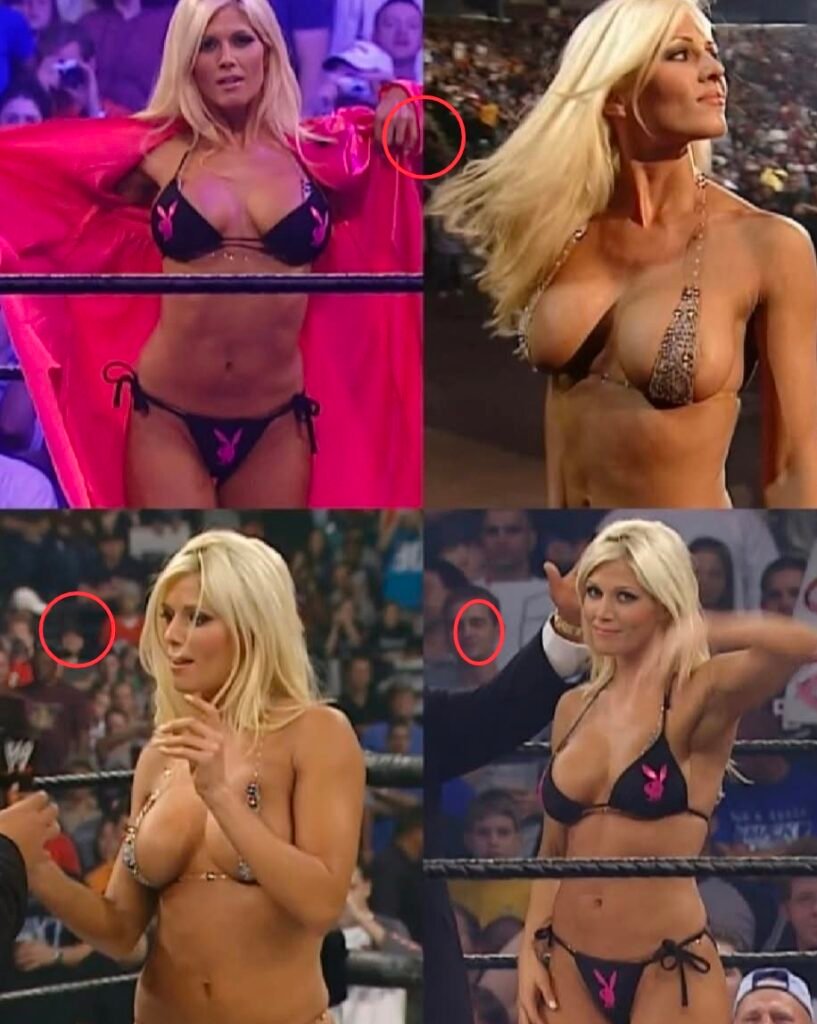The Glamour and Spectacle of Wrestling: A Spotlight Moment
Professional wrestling has always been more than just in-ring athleticism; it is a carefully curated blend of drama, athletic competition, character work, and spectacle. The image collage above captures one of the most iconic aspects of wrestling entertainment during the 2000s: the combination of showmanship and glamour, often represented by women’s segments designed to captivate live audiences and television viewers alike.
At the center of this set of photos is a performer showcasing her presence in the ring. Dressed in revealing attire, she embodies the era’s emphasis on larger-than-life characters, eye-catching costumes, and bold confidence. Wrestling promotions at the time often highlighted swimsuit contests, fashion segments, and scripted storylines that placed women in the spotlight for their charisma and appeal as much as for their in-ring skill. These moments created unforgettable crowd reactions and remain memorable for fans who lived through that era.
Looking closely at the collage, one notices the recurring element of the live crowd. Professional wrestling has always thrived on its audience. The circled areas in the background reveal fans’ hands, faces, and signs—subtle but important details that remind us how engaged and present the crowd is during these moments. Wrestling is unique because its performers feed directly off the energy of the audience, and in turn, the audience becomes part of the spectacle. Every cheer, jeer, and chant elevates the atmosphere inside the arena, shaping how these segments are remembered.
The performer’s confidence is evident in her body language. Whether she is walking down the entrance ramp, posing in the ring, or interacting with the crowd, she maintains an aura of self-assurance that is essential for professional wrestling. Beyond the physical appearance, this confidence sells the persona being portrayed. In wrestling, it isn’t only about athletic moves but about creating an unforgettable character that resonates with the audience.
From a cultural standpoint, these segments also highlight how much professional wrestling has evolved over the years. The 2000s were marked by an emphasis on glamour and sexuality as key draws for female performers. In contrast, modern wrestling has shifted toward a stronger focus on women’s athletic competition, with main-event matches, championship reigns, and world-class rivalries defining today’s women’s divisions. Looking back at these images offers a snapshot of how the business once operated and how it has changed in response to both audience expectations and broader cultural movements.
Another noteworthy aspect of the collage is how these moments are immortalized through photography and television. Professional wrestling is a live performance, but its legacy is built on images, replays, and memories that fans share. Each of the four frames captures a slightly different angle of the same persona—sometimes fierce, sometimes playful, always commanding attention. This duality between performance and documentation is what allows wrestling moments to live on for decades, sparking nostalgia and discussion long after the live show has ended.
In the end, these photos are more than just still images of a performer in the ring. They are windows into an era of wrestling that blended glamour, audience participation, and entertainment value in ways that continue to shape how fans remember the indust
ry’s history.


